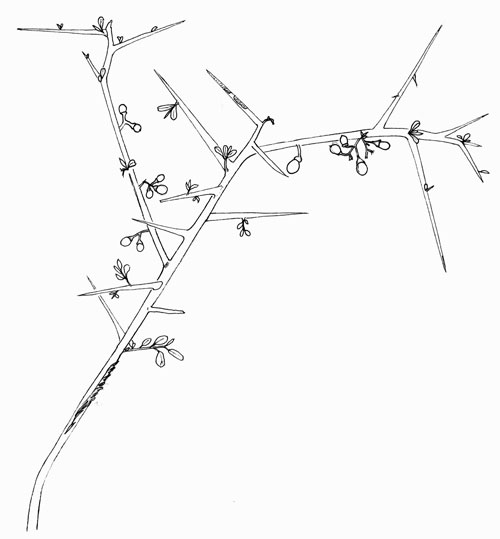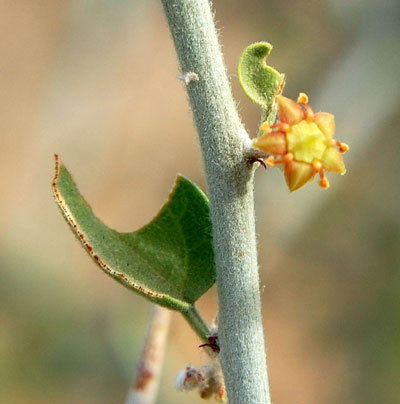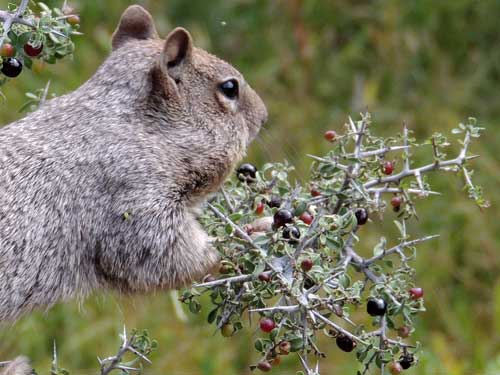Graythorn
Ziziphus obtusifolia

Pen and ink illustration from specimen observed at Sugarloaf Mt., e. Maricopa Co., Arizona, USA. 29 March 1992. Cicada scars are visible on the main stem at lower left. A thorn at top center has the photosynthetic surface chewed away, possibly by a tree cricket.

Painted Rock Mountain, Maricopa Co., Arizona. Notice that the stamens alternate with the petals and that there is a prominent hypanthium.
ARMED: Many, long stout thorns with one or more small leaf nodes.
LEAVES: Oblong leaves can be small or medium sized and are deciduous
with drought or frost leaving the gray-green stems, including the thorns, to
conduct photosynthesis.
FRUIT: A blue-black berry about 1 cm dia. containing one hard seed.
SHRUB: A medium to very large shrub in Arizona. The shrubs grow
especially large (3 to 5 m) on
flood plains near rivers where they tap into ground water. Young stems and
leaves with fine pubescence.
FLOWERS: Small yellow or cream-colored flowers have five petals, five
stamens and a distinct floral disc (hypanthium). Flowering in spring and during
other seasons depending on available moisture.
RANGE: Found commonly throughout much of the Sonoran Desert of Arizona.
Most common along washes and river flood plains. Also found at higher elevations
especially in open rocky situations.
In the illustration at left notice that on the stem just above the cut there is a series of scars in the bark. These were created by the egg-laying activities of a female cicada. These are the familiar loud buzzing insects of midsummer. Only the males buzz for purposes of attracting a mate. The female possesses a sharp ovipositor and inserts her eggs into young, still tender twigs of trees and shrubs. The scars remain visible for several years.

September 2016 a Rock Squirrel was seen filling its cheeks with the fruit at Peña Blanca, Sta. Cruz Co., Arizona. It would be interesting to know if the squirrel breaks or ingests the very hard seeds and if this feeding serves to disperse the seeds.